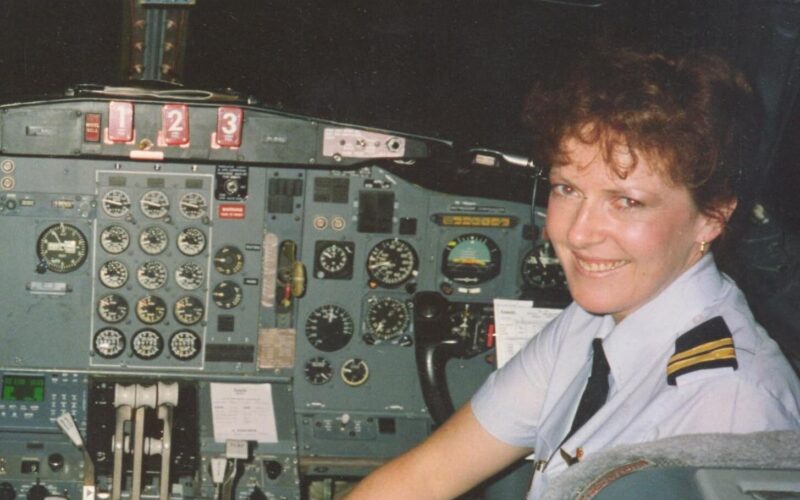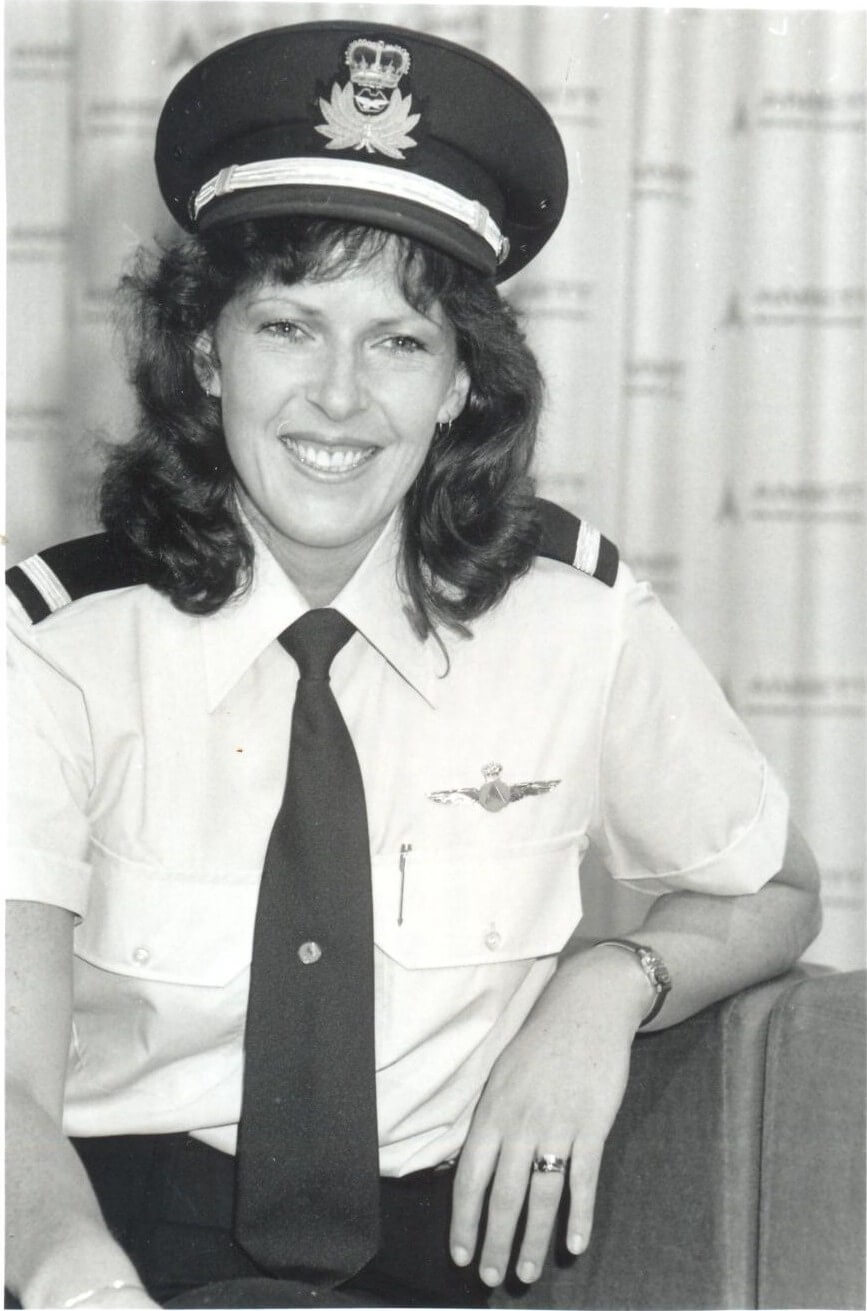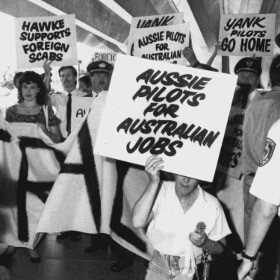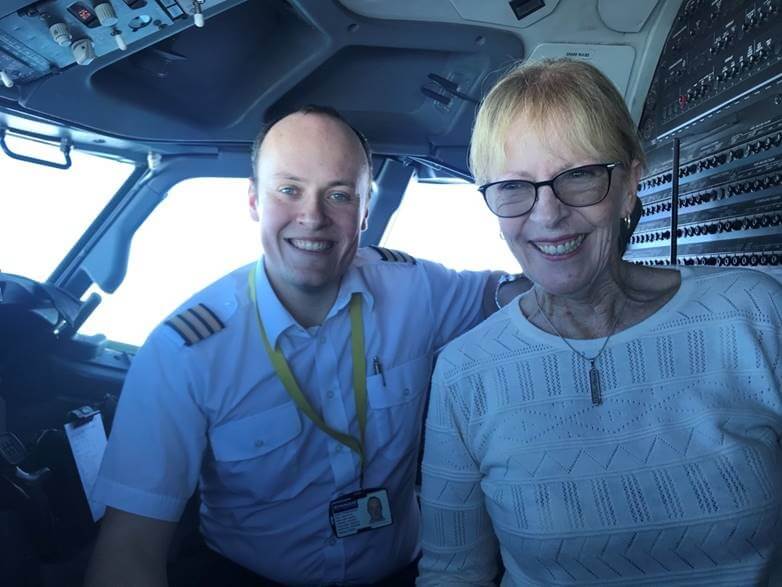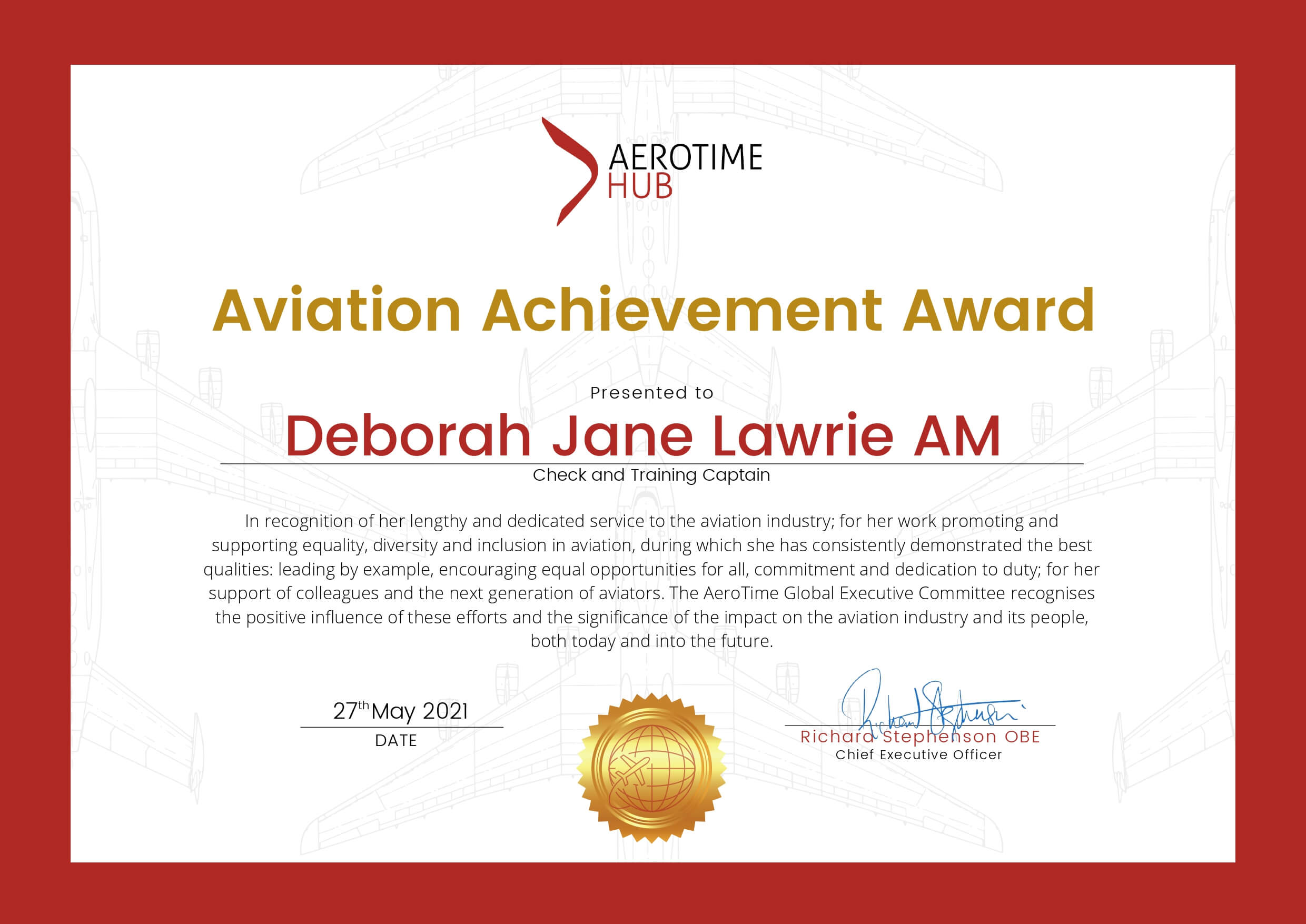Captain Deborah Lawrie changed the world for female aviators. In the late 1970s, Lawrie was the first woman to become a pilot at a major Australian airline after winning a landmark discrimination case against Ansett Airlines. Deborah Lawrie is the latest recipient and first Australian to receive the AeroTime Aviation Achievement Award for her lifelong dedication to the aviation sector and the impact she has had in encouraging the next generation of aviators.
Now, Lawrie has amassed 50 years in the industry. But she first caught the aviation bug at the young age of 14. By 1971, when she was just 18 years old, Lawrie had obtained a private pilot license. Next, she gained her commercial license in 1973 and then went on to log an impressive 2600 flying hours in general aviation, flying as an instructor and a charter pilot.
In 2019, Lawrie was made a Member of the Order of Australia at the 2019 Queen’s Birthday honors in recognition of her significant service to aviation as a commercial pilot and to women in the profession. In June 2020, she was inducted into the Australian aviation Hall of Fame.
Today, Lawrie is consulting in safety management and investigation at BirdRock Aviation. Previously, she was employed as a check and training captain for Australian carrier, Tigerair, and has flown a range of aircraft, including the Fokker aircraft, the McDonnell Douglas DC-9, Airbus A320s and A330s and Boeing 727s and 737s for carriers such as Ansett Airlines, KLM Cityhopper, KLM, Jetstar, and Tigerair.
Lawrie was first introduced to the aviation industry in the late-1960s, when her father decided to pursue flying as a hobby and cemented her passion for flying with a promise to one day allow her into the cockpit.
Lawrie says: “I was the oldest child and very close to my father, so I learned the stuff with him. I learned all the theory, helped him with checklists and went to Moorabbin Airport and watched him go off and have his lessons. I was only 14 at that time and he promised me two lessons for my 16th birthday. So, when I turned 16, I had my first lesson.”
However, it didn’t exactly go to plan. “I hated it,” Lawrie admits, before continuing to tell the story of her first lesson, which was ruined because she chose to wear a dress. The outfit created conflict with the seat adjustment bar found between a pilot’s legs on light aircraft such as the Cherokee.
But Lawrie never wore a dress on a flight again and, after a successful second flight, she continued to accumulate 11 flight hours over the next 11 months with the intention of eventually flying solo.
After obtaining a commercial license, Lawrie embarked on several safari flights across the Australian outback with her friends to build up hours for her commercial license. She says: “I was at university, and I just thought that on the holidays it was a good idea to ask a few friends if they would want to go on a safari around Australia. And off we went. I did a couple of [these trips], and they were amazing.
Deborah Lawrie in 1980
“At the end of the trip, these trusting souls who came along with me learned how to refuel the aircraft and how to tie it down and even how to navigate. It was really an amazing time.”
After completing her instructor rating Lawrie secured her first job at a flying school at Moorabbin airport.
In 1976, following a stint in general aviation, Lawrie decided to take her pilot career a step further by pursuing a career in an airline. But little did Lawrie know that she’d soon become embroiled in a legal matter that commenced in 1978 when, after two interviews with Ansett Airlines ended in rejection, questions were raised about discriminatory influence at the carrier.
Following the airline’s decision, Lawrie filed a landmark legal case with the Victorian Equal Opportunity board. After an extensive legal battle, Lawrie won the case in 1979 and was subsequently hired by the airline.
But despite this historic victory, Lawrie continued to encounter further obstacles that were intended to keep her from the cockpit. So, how did she keep going?
Lawrie replies: “Well, I’m very stubborn. I always have been, and I don’t take no for an answer, especially if I think I’m right. I had nothing to lose. I wasn’t going to be doing any harm by keeping on going.”
Australian pilots strike in 1989
Lawrie’s breakthrough occurred after Australian-born billionaire businessman and media tycoon Rupert Murdoch, who had assumed control of the airline, intervened. Prior to the case, Lawrie had taught Murdoch’s brother-in-law to fly. Shortly afterwards, Lawrie received an endorsement from Murdoch stating that she should be given the same rights as any other pilot at the airline. So, on January 22, 1980, Lawrie operated her first passenger flight aboard a Fokker Friendship from Alice Springs to Darwin.
Her court case garnered a significant amount of attention in Australia, including the opportunity to take part in numerous interviews with television network broadcasts and newspapers. For Lawrie, the most memorable moment from this time took place during a passenger flight from Melbourne to Launceston. A flight attendant leant on the back of the seat in front of Lawrie and said: ‘I’m Margaret, and I’m here to tell you that all us girls are right behind you’.
After a lengthy career flying across Australia, Lawrie’s next destination was Europe, where she flew for KLM Cityhopper, the regional airline subsidiary of KLM, for close to sixteen years. Prior to this time, Lawrie navigated the 1989 pilot strike in Australia, which was yet another notable momement in her aviation career. She also became a mother to a son, Thomas, who is also a pilot flying for Ryanair and is based in Edinburgh.
In February 2020, she surprised Thomas by visiting Edinburgh and later she was allowed to sit on the jumpseat during one of his flights from Edinburgh to Barcelona. She places this event in the top ten memorable moments of her aviation career. The top spot is marked by a flight from Amsterdam, which resulted in a dual engine malfunction after engine icing system failures. The engines showed no indications of a malfunction, but the performance of the engines was severely compromised and as the plane descended to 10,000 feet, the ice melted, and the engines recovered.
Deborah Lawrie and her son Thomas
Lawrie explains: “Both the engines started to perform rather poorly as they were suffocating with the ice build up. The airplane then started drifting down and we couldn’t figure out what was wrong with it. All the indications were perfectly normal.
“I think my life flashed in front of me and I remember saying, ‘if I get through this, I’m going to give up flying’ or ‘this has taken 10 years off my life’. All these things were going on in front of me, but then the last thing that I remember thinking was, ‘okay, this is not happening, because I have to get back to pick up Thomas, so this is not happening’.”
Currently, Lawrie is passionate about rebuilding the aviation industry and is keen to communicate the importance of human factors and team resource management to other professional industries. She also encourages young aviation enthusiasts to be resilient, resolute, dedicated and willing to make sacrifices in order to remain in the industry.
She says: “I think you have to make sacrifices and have phenomenal dedication. That’s what we have to do to stay in this industry. So, if you want to be in it, it’s the best, the most amazing and most wonderful industry, but it requires dedication and sacrifice. And if you hang in there long enough, it’ll be okay for sure.”
AeroTime Aviation Achievement Award
To celebrate her dedication and service to the industry in promoting, supporting and encouraging equal opportunities and inclusion in aviation, Deborah Lawrie becomes the 21st recipient to be awarded the AeroTime Aviation Achievement Award.
Lawrie now joins 20 other award recipients around the world who are being recognized for their work in changing the aviation sector and encouraging the next generation of aviators.
She says: “Thank You so much this is an amazing honour and it gives me the encouragement to keep pushing for aviation.”

